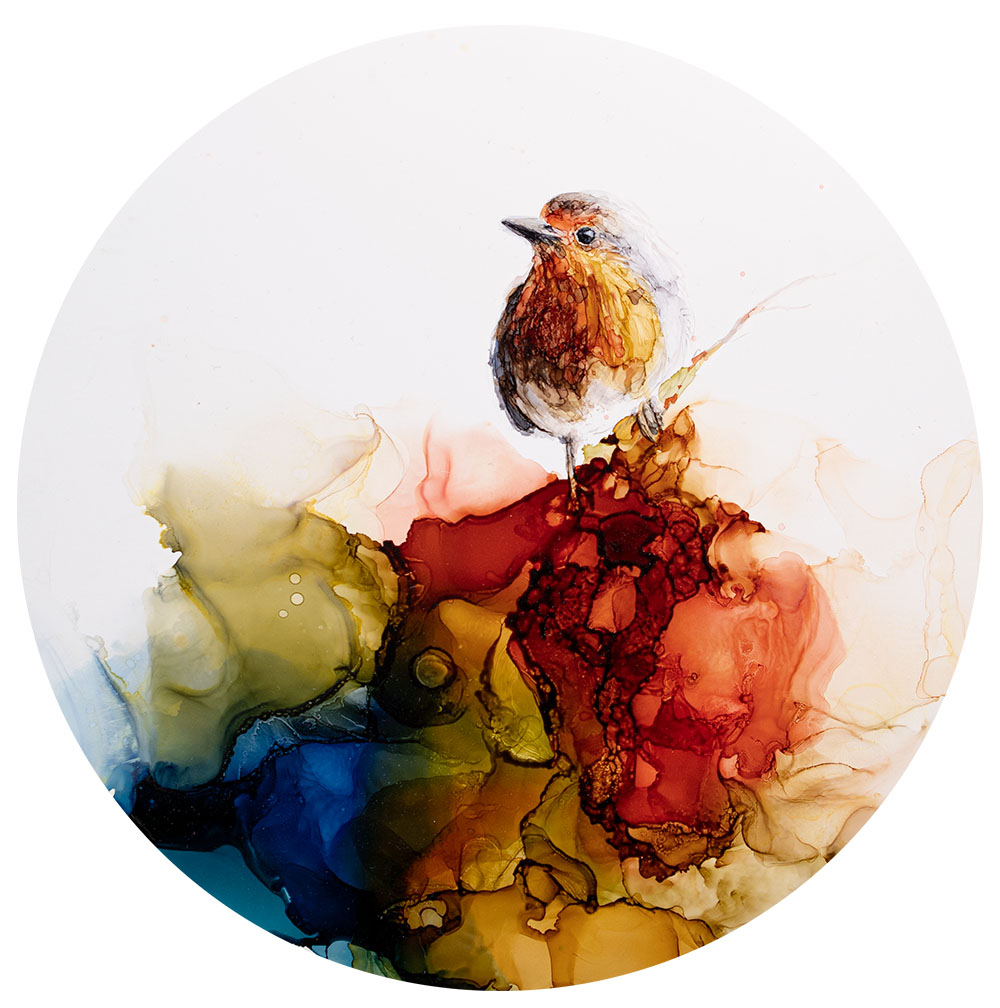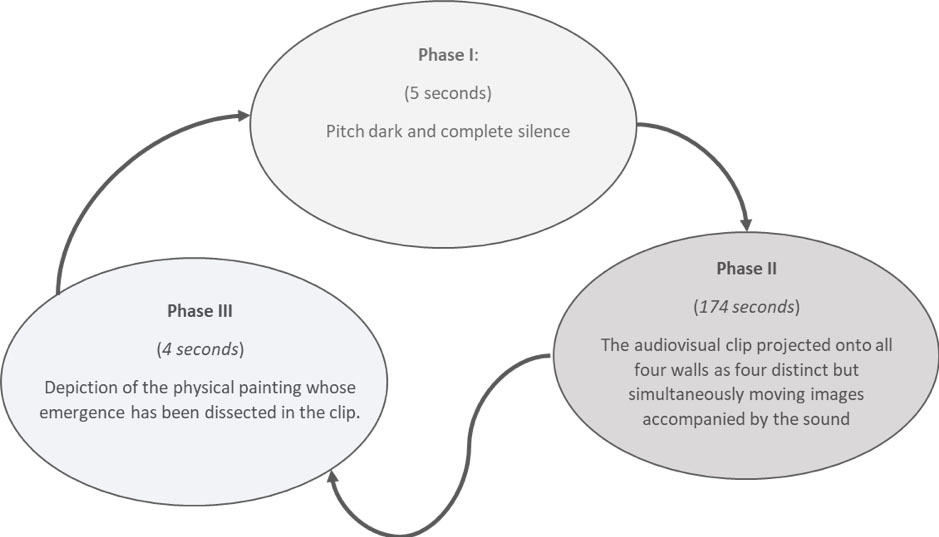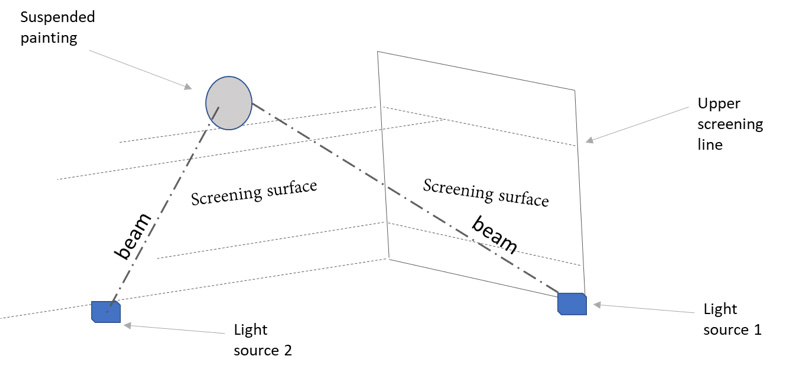Traces and Time
Enacting the Journey of Emotions between Distinct Minds

Concept
Traces and Time Project, by blending words, colors and sounds through technology, attempts to recreate the journey of emotions between distinct minds. Emotions travel from one mind to another through articulation of words each of which carries multiple meanings. In both ends of this journey within two distinct minds, emotions are first enacted and then reenacted in the fractal-like structures of brains. They appear from the depths of one imagination at the beginning of the journey to be absorbed by another imagination at the end. Possibly triggering new thoughts in there. In physical terms this journey starts with words that travel on sound waves getting perceived by minds where they are converted into images through high-paced operation of neural structures.
Traces and Time displays this journey of emotions by drawing on the key insights of quantum theory: incommensurable states of matter may lie behind seemingly harmonious patterns of nature; and more specifically; determinism and randomness may operate simultaneously in distinct subsystems. When unified these seemingly incommensurable modes of existence may generate emergent properties that do not exist in any of the constituting systems. These insights give us hints as to how a particular state of emotion, such as grief that exists in a human mind may conceive words that are converted into images in other minds through both determined and random interactions with the existing meanings and memories. Against this background, Traces and Time provides an account of the journey of an emotion as it travels first inside words, and then enters into another mind where it is processed by the fractal-like structures of this mind to end up as an image. To reenact this journey Traces and Time benefits from the strikingly different relationships of music and painting with time.
A Painting is a frozen instance in time; once completed it remains constant and thus indifferent to the temporality. A piece of music on the other hand is only discernible through time, existing only in temporal dimension being meaningless at any single instant. However, if one can animate the time hidden in the painting by separating it into two subsystems as past and present then it is possible to provide a place where music can flow. And this is the entry point of the link between randomness and determinism which are then used to imitate the process that commences when an emotion embedded into a word enters into a(nother) mind to create an image. The journey we describe ends with this predetermined image but it passes through surprisingly random dynamics embedded into the act of painting in minuscule pieces of time and space beyond the threshold of human perception. At this level in very small spaces and through infinitesimal time intervals appear and disappear a multitude of random forms as drops of paint reach their final places on the canvas. These movements are tiny, extremely high paced, temporary, and surprisingly beautiful while being random within a constrained space-time. Thus, in any painting at an almost microscopic level there are time-dependent random ingredients that can be integrated with music so as to generate new forms of expression besides the final image that they form. These random movements are unit elements that we use to reveal how emotions initiated by one mind are injected into another mind through words that initiate elusive interactions.
In practice this entire concept is operationalized in the form of videos that we call “emotion-flows”. An emotion-flow is created as follows: inspired by the same poem, a painting is made by using alcohol-paint that facilitates the capture of hidden movements; and a piece of music is composed to accompany the emergence process; and the way in which painting emerges at a miniscule level is captured by high-tech filming instruments so that the hidden beauty of this dimension is pulled back to the domain of human perception through reframing, magnification, pace-reduction, and synchronization. In this way the journey of an emotion from minds to words, from words to fractal-like movements, and from these movements into concrete images is enacted for human perception. As a proof of concept we produced an emotion-flow titled “Traces and Time”. Using this as an initial step we aim to attain three project goals.
Project Goals
Exhibition: Producing four more emotion-flows in the form of distinct videos to be presented (as described below) in exhibitions. These emotion-flows are to be produced by filming the actual emergence of paintings as in the proof of concept (see the video).
Computational Challenge: Exploring the potential of quantum computing in order to visually examine the degree of concurrence between actual flows between minds and what we produce as emotion-flow in our interdisciplinary art. The goal is to see whether quantum computing may allow us to model two actual minds and the interaction between them in response to articulation of words.
Live Performance: To perform a “live” emotion-flow event. Articulating words; and in response to them improvising music and painting simultaneously while using advanced visual technology to zoom into subsections of the paint flows and projecting them on screen (see descriptions below)
Project Requirements
Exhibition Requirements (described for POC)
We produced a single emotion-flow as proof of concept. The technical descriptions given in this section are specified in accordance with the duration of this emotion-flow. However, the remaining descriptions remain the same for any other emotion-flow.
The presentation is a repeated sequence of 183 seconds. It consists of three phases as illustrated below:

Technical Requirements (described for POC)
- A closed space, preferably an empty room of rectangular shape with symmetric surfaces.
- 4 HD Projectors to show the clip (phase II) on all four walls of the closed space simultaneously
- Surround sound system that enables around 70-75 dB of volume for the clip (phase II)
- The painting on a round canvas of 22cm diameter (in phase III) is to be suspended from the ceiling by invisible ropes just above the upper screening line as illustrated below (only two of four screening surfaces are shown for brevity)

Credits
Alcohol Ink Painting by Esra Üstündağ
Visual Capture & Tech Art by Kleis Kemperman
“Traces and Time” recited by Ruken Barış
Music and Lyrics by R.Gökhan Koçer